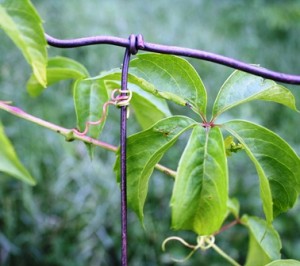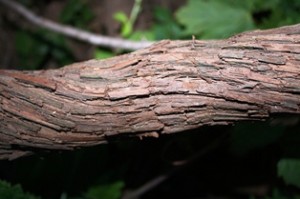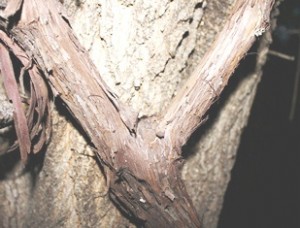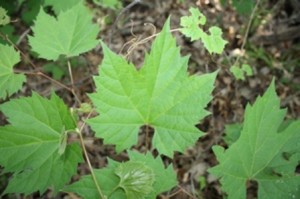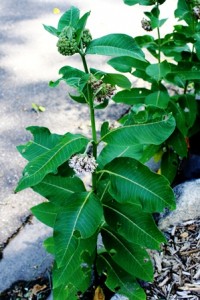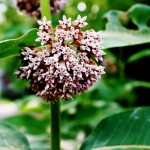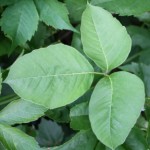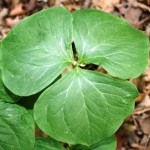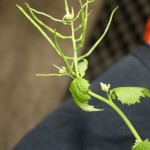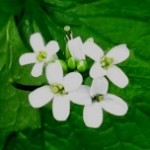Virginia creeper (Parthenocissus quinquefolia) and Woodbine (Parthenocissus vitacea) are two almost identical native species of woody vine. For the sake of simplicity “Virginia Creeper” refers to either/both plant species in this article.
Virginia creeper at left – five leaves with serrated margins, connecting together at the leaf center.
Virginia creeper is common and widespread in Midwest woodlands but don’t let its abundant availability diminish its value in native plant habitats. Here are a few interesting details about Virginia creeper excerpted from the USDA/NRCS database.
Erosion Control: Although Virginia creeper has a rather open canopy structure, with its energetic growth and above ground rooting and sprouting habits this species can be useful groundcover for erosion control and watershed protection, particularly in shaded areas.
Restoration: Virginia creeper is a native component of eastern climax forests.
Wildlife: Virginia creeper provides cover for many small birds and mammals. Songbirds are the principle consumers of the fruit; however deer, game birds and small mammals will also feed on them. Cattle and deer will sometimes browse on the foliage.
Virginia creeper is a desirable, amiable and easy to grow plant. Unlike wild riverbank grape, Virginia creeper is not likely to girdle and choke desirable trees and shrubs. In fall, the leaves of Virginia creeper turn to beautiful shades of red and maroon. It can be a great disguise growing on and over an unsightly fence.
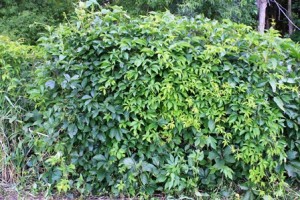
- Virginia creeper completely covered this wire farm fence (Copyright 2012 Landscape Restoration, Inc.)
Virginia creeper is easy to uproot and transplant. Planting Virginia creeper at the base of dead tree trunks (especially buckthorn!) will provide a natural trellis aiding in homeowner privacy as well as bird and wildlife habitat. Virginia creeper makes a great ground cover. Dense patches of Virginia creeper will shade out and inhibit the germination of invasive plant seedlings like garlic mustard and buckthorn.
Any mysterious vines growing in your woodland? Share a photo with us and we can help with identification.



